41 places you can explore a salt marsh – and some wildlife you might find there
If you’re looking for somewhere new to explore on the coast, leave the beach crowds behind and explore a salt marsh! Search out crabs scuttling between waving green grasses, dig for quahogs, watch for birds, and kayak — or snorkel — waters swarming with fish big and small.
These interesting habitats aren’t just beautiful, but also protect clean water. In fact, you may have heard a lot about conserving salt marshes around Buzzards Bay. But why are salt marshes so important, and why visit one near you?
What is a salt marsh?
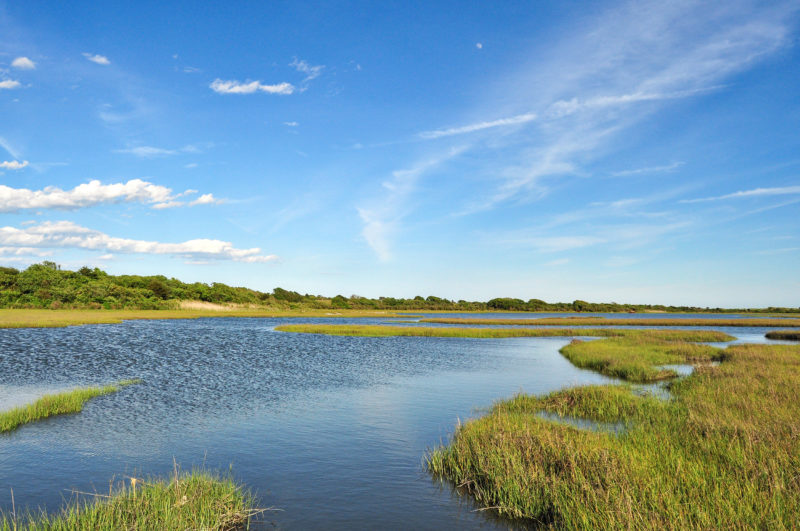
Dartmouth’s magnificent Allens Pond, lined with salt marshes, is one of the most significant coastal habitats in southern New England.
All around the edges of Buzzards Bay, you’ll find wide stretches of grass and mud cut by winding streams that run out to the Bay. These are salt marshes: coastal wetlands full of unique plants and animals, where life revolves around the daily motion of salt water in and out with the tides.
Salt marshes are important because they filter out pollution, provide habitat for wildlife, and protect homes from flooding. They’re an especially important home for fish: More than half of commercial fish species on the East Coast use salt marshes for some part of their lives.
Where can I explore salt marshes around Buzzards Bay?
One of the things that makes Buzzards Bay special is just how many salt marshes fringe its edges. You might even be surprised to find a marsh you’ve never noticed on the other side of your favorite beach! Here are 41 places around the Bay where you can explore a salt marsh.
- Westport: Let Conservation Area, Horseneck Beach State Reservation
- Dartmouth: Allens Pond Wildlife Sanctuary, Ocean View Farm Reserve, Demarest Lloyd State Park, Wylde Reserve, Slocum’s River Reserve, Lloyd Center for the Environment, Russells Mills Landing, Cornell Farm, Smith Farm, Star of the Sea Reserve
- Fairhaven: Egypt Lane, LeRoy L. Wood School Trail, Edgewater Street, Little Bay Conservation Area
- Mattapoisett: Nasketucket Bay State Reservation, Brandt Island Cove District, Munn Preserve
- Marion: Peirson Woods, Oakdale Beach, Howland Marsh, Brainard Marsh, DePina Landing
- Wareham: Weweantic River Boat Ramp, Marks Cove Conservation Area, Great Neck Conservation Area, Great Neck Wildlife Sanctuary
- Plymouth: Lyman Reserve
- Bourne: Little Buttermilk Bay Woods, Little Bay Conservation Area, Barlows Landing, Cataumet Greenway, Squeteague Harbor Beach, Lawrence Island
- Falmouth: Quaker Marsh Conservation Area, Old Silver Beach, Chapoquoit Beach, Wood Neck Beach and Little Sippewissett Marsh, Flume Pond
How can I explore a salt marsh?
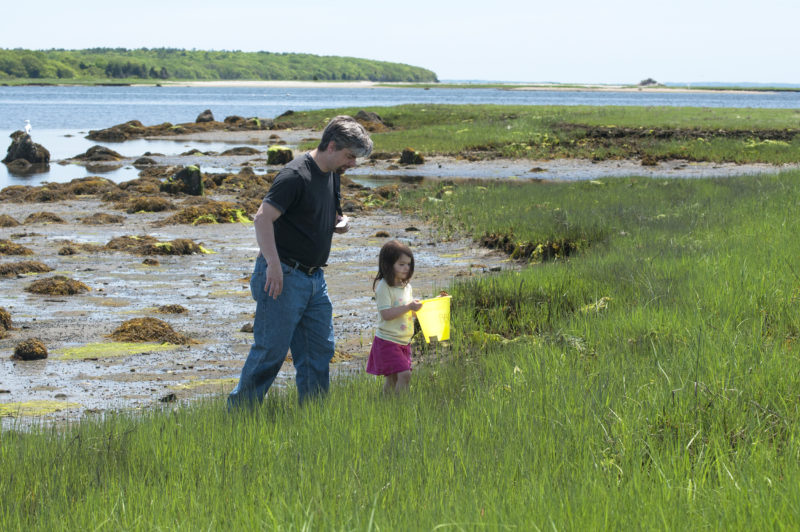
Little Bay Conservation Area in Fairhaven is a fantastic place to poke around a salt marsh at low tide.
Depending on where you’re exploring, there are three great ways to have an adventure in a salt marsh: by foot, by paddle, or by snorkel.
Salt marshes vary in depth depending on the tide, so your best bet for exploring on foot is to visit at low tide. Be sure to wear high boots or waders, as many parts of a salt marsh can be soft or muddy. Exploring by foot within a marsh’s tidal rivers is a great way to seek out shellfish and crustaceans, including some — like quahogs and blue crabs — that you can take home for dinner if you have a town shellfishing permit.
By canoe or kayak, a salt marsh becomes a fascinating maze to explore. You could easily spend hours navigating through the marsh channels and discovering their hidden secrets! Paddling through a marsh is a great way to observe birds and shy wetland creatures like muskrat, as a quiet boater can get close to animals without disturbing them. If you’re exploring by boat, we recommend visiting a marsh at high tide to avoid getting stuck on sand bars or mud flats.
(Whether you’re walking on top of a salt marsh or paddling around them, be careful around the marsh’s edges. These edges can be soft or unstable, and many are vulnerable to disturbance due to the impacts of nitrogen pollution and sea level rise.)
The last and most immersive way to visit a salt marsh is to explore by snorkel. Snorkeling is an easy way to get up-close and personal with marsh animals while cooling off on a hot day. Plus, it’s easy and inexpensive for beginners of all ages to try!
What lives in a salt marsh?
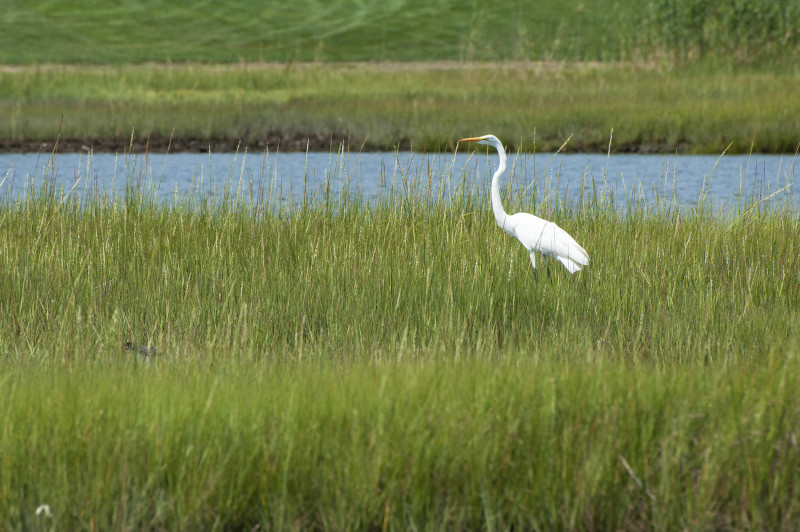
A great egret stands in a salt marsh on Eel Pond in Mattapoisett.
- Birds: Hundreds of different birds come to Buzzards Bay’s salt marshes for the abundant food and diverse habitats they offer. Great blue herons, green herons, and egrets are a graceful sight, wading through the shallows with their long legs. In the spring and summer, look for osprey building their large nests on rocks and platforms by the water. Dozens of different species of sandpipers and plovers (this guide can help you tell them apart!) scuttle across mud flats, small terns, tree swallows, and barn swallows twitter overhead, and ducks of all sorts paddle peacefully along. You may even spot a belted kingfisher perching on branches above the water’s edge, or diving after fish.
- Fish: Marshes are an especially good place for young fish to grow up, protected within the maze of grasses. Dark-striped mummichogs and iridescent silversides are common small fishes you’ll see year-round. Keen eyes might pick out flat winter flounder hiding on the muddy bottom, disguised by their excellent camouflage. In the spring, you may see herring and alewife swimming upstream to spawn in fresh water, and young striped bass following behind them in pursuit of lunch!
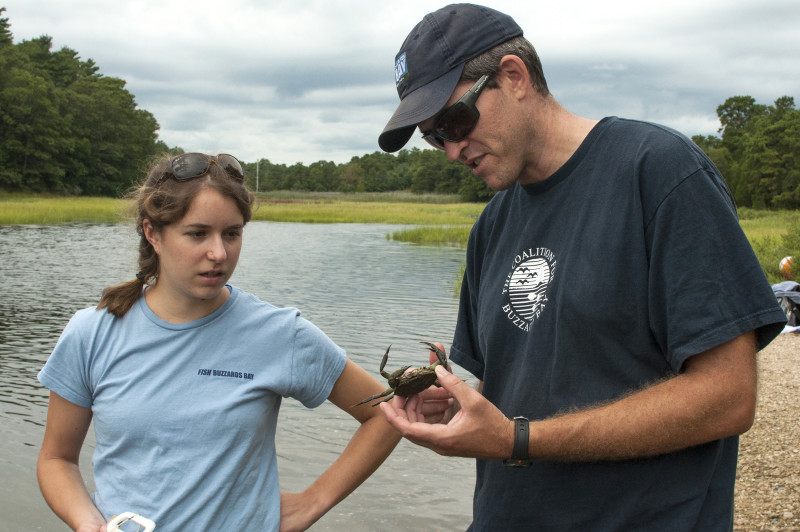
Explore the salt marsh at the Lyman Reserve, where you can catch blue crabs and discover life by the shores of Red Brook.
- Crabs: The grasses and mud of salt marshes provide an excellent place for crabs to hide. You may see everything from little hermit crabs to large, swimming blue crabs, distinctive for their bright blue-tipped legs and claws. Fiddler crabs stand out as they guard their small burrows with one enormous claw. You may also see two invasive species in local marshes: green crabs, which are dark greenish-brown with pink bellies, and Asian shore crabs, which are green or brown with dark stripes on their legs.
- Mammals: Paddle through a salt marsh on an early, still morning and you may be rewarded with a sighting of one of the shyest visitors to a salt marsh. Mammals use salt marshes, too, often visiting during the night or in the wee hours of the morning. Coyote, deer and raccoons roam around marsh edges to forage for food — look for raccoons breaking open clams and mussels on a rock with their dexterous little hands! If you see a small, furry brown head swimming quickly across a marsh channel, you’ve spotted a muskrat, which looks like a miniature beaver with a long, skinny tail.
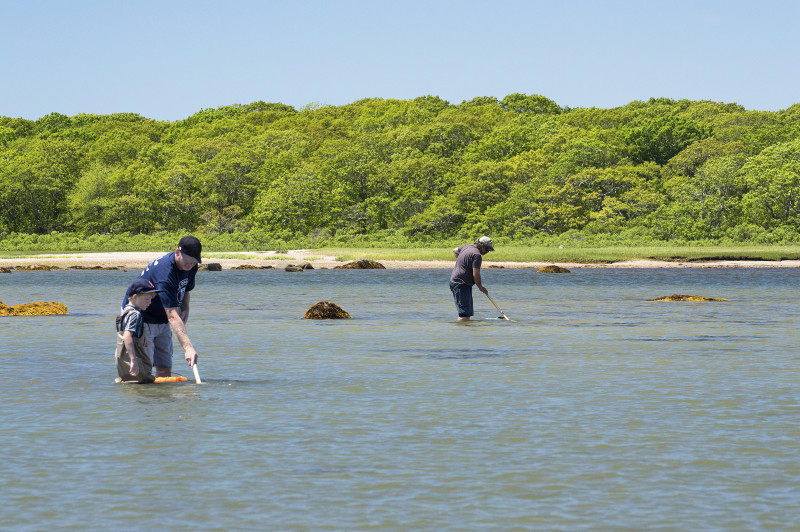
Search for quahogs in the rich waters along West Island’s salt marshes.
- Shellfish: Salt marshes contain a lot of floating plant matter and nutrients, making them a great home for shellfish that filter their food from the water. Poke around in the marsh grasses and you’re sure to find ribbed mussels, which grow around the base and roots of a marsh plant called smooth cordgrass. Snails, especially the invasive common periwinkle, rove around the marshy bottom grazing on algae. In some salt marshes, you may find oysters scattered on the bottom, or growing on top of each other to form reefs. At low tide, you might also notice bubbles popping up through small holes in the sand or mud— a giveaway that quahogs are hiding below!